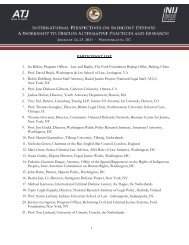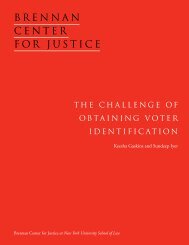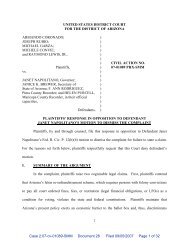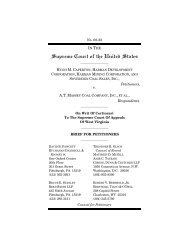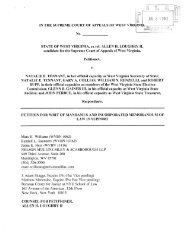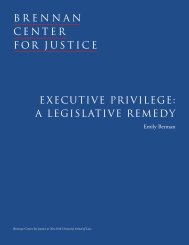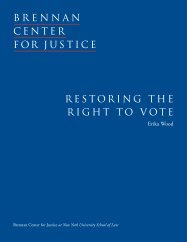THE NEW YORK STATE LEGISLATIVE PROCESS: AN ...
THE NEW YORK STATE LEGISLATIVE PROCESS: AN ...
THE NEW YORK STATE LEGISLATIVE PROCESS: AN ...
You also want an ePaper? Increase the reach of your titles
YUMPU automatically turns print PDFs into web optimized ePapers that Google loves.
44 <strong>THE</strong> <strong>NEW</strong> <strong>YORK</strong> <strong>STATE</strong> <strong>LEGISLATIVE</strong> <strong>PROCESS</strong>: <strong>AN</strong> EVALUATION <strong>AN</strong>D BLUEPRINT FOR REFORM<br />
■■ LEGISLATION DELAYED OR NOT PASSED<br />
Interest groups in every state can point to legislation they support that has failed<br />
to become law. Such complaints cannot be the test of a solid legislative process,<br />
however, unless the legislation in question also has the support of a majority of<br />
legislators in both chambers but has nevertheless failed to pass. In that latter<br />
circumstance, the legislature has failed to function properly to allow the people’s<br />
elected representatives to address their concerns.<br />
In New York State, the current system has prevented numerous bills from being<br />
considered and approved by the full Senate and Assembly despite such majority<br />
support. The following examples are drawn from published reports and represent<br />
only a few of the most notable cases:<br />
■ Increase in the Minimum Wage. On March 1, 2004, the Assembly passed a<br />
bill (A.09710) to raise the state’s minimum wage. In the Senate, a clear majority<br />
of senators have indicated their support for similar legislation (S.3291C)<br />
introduced by then-Senator Velella, the chairman of the Senate’s Labor<br />
Committee, and thirteen other Republican senators. Despite majority<br />
support for such an increase, however, the Senate Majority Leader has<br />
prevented the bill from reaching the Senate floor for a vote. 256 Because of the<br />
Majority Leader’s control over the legislative calendar, as well as the stringent<br />
limitations on discharge motions, the voters’ elected representatives cannot<br />
bring the bill to a vote.<br />
■ Mental Health Insurance Parity. “Timothy’s Law” (S.5329/A.8301) would<br />
require health insurers in New York State to cover treatment for mental<br />
illness and substance abuse. Named for a 12-year-old boy who committed<br />
suicide, and whose insurance did not cover the psychological treatment that<br />
might have helped prevent his death, the bill has received widespread public<br />
support. A coalition advocating for the bill has over 30 member organizations,<br />
including hospitals, mental health agencies, and health care, teacher,<br />
and school employee unions. Significantly, the bill has passed the Assembly<br />
and has at least 33 majority co-sponsors in the Senate (out of a total of 61<br />
Senators). Despite this majority support, the bill has languished for several<br />
years in committees. Most recently, in 2003, movement on the bill halted<br />
when the Senate Rules Committee did not release the bill to the floor for a<br />
vote. 257<br />
■ Partial Repeal of the Wicks Law. For many years, school districts and local<br />
governments have sought reform of a 91-year-old provision of New York<br />
State Law known as the “Wicks law.” The law requires school districts and<br />
local governments to hire separate contractors for heating, plumbing, and<br />
electrical duties on any construction project that costs over $50,000.<br />
Although the law was originally passed to curb corruption in the construction<br />
industry, requiring multiple contractors allegedly often causes the projects to




